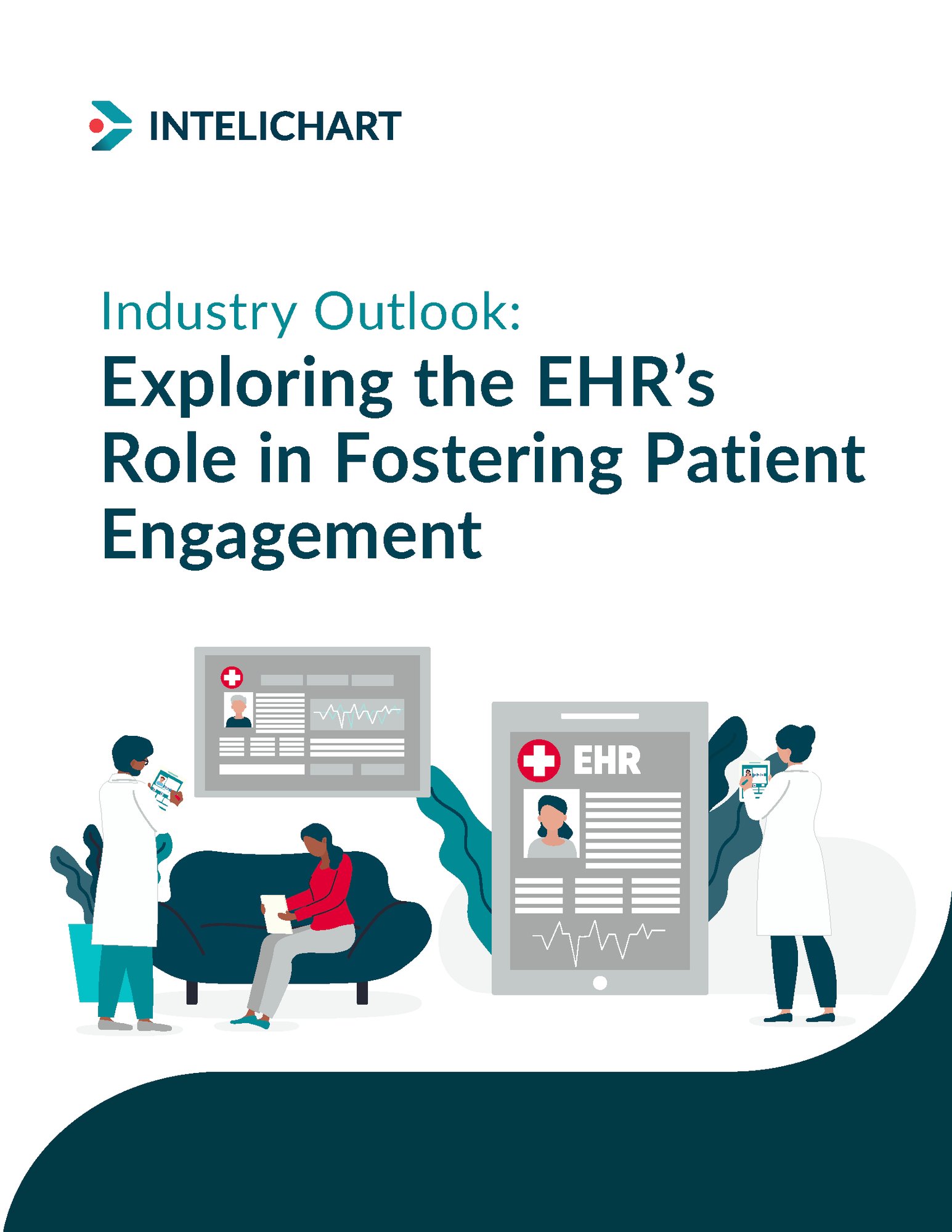Chapter 2
Key Patient Engagement Trends to Get Ahead of the Curve
As we know from the ramifications of the patient-as-consumer mindset, provider organizations must maintain a positive patient-facing digital experience. Often, they look to their EHRs to provide the tools necessary to communicate with patients, such as online scheduling tools, digitized patient intake, and telehealth.
The more engagement solutions an EHR vendor can offer, the better positioned it will be to increase customer satisfaction and retain its market share.
In addition to providing all the functionality today's patient expects, EHRs must look to the future to get ahead of trends and help their end-users stay ahead of the curve.
Trend to watch #1:
Provider reviews' influence on healthcare provider choice.
According to a recent report by YouGov, online provider reviews and star ratings have become critical influencers to patients looking for a new provider. Instead of using Healthgrades.com or a health system's website, most consumers turn to Google Business Listings (Google).
Patient engagement tools need to help providers excel in Google reviews, and an easy way to do this is to use data from patient satisfaction surveys. Ideally, patients that indicate a high level of satisfaction should be prompted to leave a review on Google. Automating survey workflows for patients that demonstrate a high level of satisfaction can ensure that the patients most likely to leave a positive review do so, decreasing the burden on staff to sift through reviews and reach out to patients. The result is more positive ratings and higher rates of new patient acquisition.
Trend to watch #2:
Online patient self-scheduling as a strategy to increase market share.
According to a recent MGMA poll, 64% of healthcare organizations are prioritizing patient access and scheduling. And 47% indicated that online patient scheduling was their number one priority for 2023.
The drive for patient self-scheduling likely comes from studies examining patient behaviors. One study found that 80% of patients prefer a provider that offers online patient self-scheduling. When healthcare organizations are competing, convenient scheduling functionality can be the difference between booking a new patient or that patient going elsewhere. Therefore, EHRs developing patient engagement tools need to be mindful of this market pressure.

Trend to watch #3:
Patients will expect data from remote patient monitoring devices to be incorporated into care plans.
According to the CDC, 60% of Americans have one or more chronic diseases. A recent Forrester survey predicts that a quarter of this population will use a remote patient monitoring (RPM) tool by the end of 2023.
Patients will soon expect providers to use the information gathered in RPMs to guide care plans. With all the different apps and devices now available, not to mention the technology to come, it will be impossible for all the disparate information to feed directly into EHRs. The best way to harness this information is through patient-reported outcomes surveys (PROs) to keep providers in the loop.
Patient engagement tools, such as automated surveys that can harness PROs and trigger next steps, will position providers to improve health outcomes. The reward for EHRs would be increased customer satisfaction with their patient engagement product and the perception that the EHR supports them in their value-based care (VBC) initiatives.
Trend to watch #4:
Virtual visit demand will stabilize.
A recent survey found that 75% of patients that have already used telehealth would choose a virtual visit in the future. Another survey reported that a priority for patient care choice is proximity to a facility, with 83% citing it as a deciding factor, regardless of facility quality. Although telehealth visits have tapered off since the height of the pandemic, these statistics point to future demand for virtual visits.
The most successful telehealth programs begin with technology that integrates into existing workflows and with other patent engagement tools. Offering easy online self-scheduling and digitized patient intake alongside virtual visits increases convenience for patients while streamlining administrative tasks for staff.

Trend to watch #5:
More providers will be accused of information blocking.
The ONC has received over 400 information blocking complaints against providers since the Information Blocking Rule was enacted in April 2021. The EHR’s role in helping providers avoid these complaints is facilitating the open sharing of information between provider and patient, which is where patient engagement tools have a role.
When technology processes break down, providers can be accused of information blocking when the reality is that their patient engagement platform could not promptly provide the information requested.
The easiest way for EHR companies to help their end-users avoid these complaints is to use patient engagement technology that integrates seamlessly into existing workflows, avoiding bottlenecks that mistakenly are perceived as information blocking by patients.
Trend to watch #6:
Patients will expect to track prior authorization requests.
The Advancing Interoperability and Improving Prior Authorization Processes Proposed Rule will profoundly impact patient expectations regarding visibility into pre-authorization for care when enacted. The time to prepare for patient expectations around submitting and adjudicating these requests is now.
Since prior authorizations are closely linked to patient demographics and insurance verification, it makes sense to use patient engagement to facilitate workflows and ensure the information is captured digitally from the outset rather than manually inputting it later.
Patients will soon come to expect access to prior authorization decisions via their patient portal because, in their minds, the process will be like receiving lab results. EHRs and patient engagement technology need to look ahead to prepare for these future expectations.






